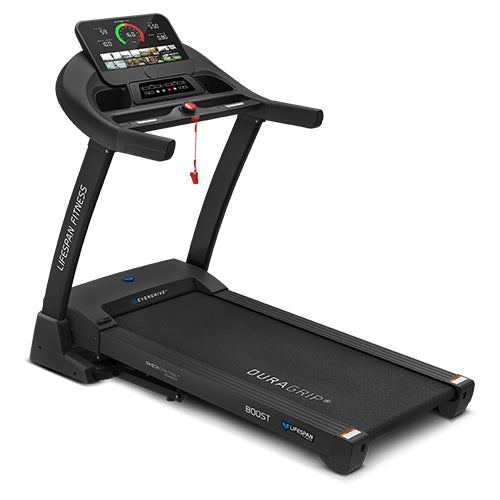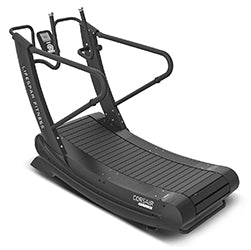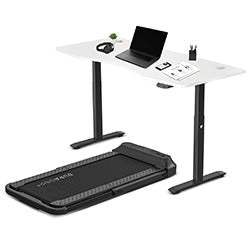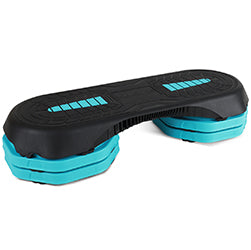

Weightlifting is one of cornerstones of a well-rounded fitness regime, the advantages of which many trainers (especially) aren’t utilising. Many of us believe that integrating weight plates into your workout, especially if they’re attached to a barbell, is reserved for body builders and serious weightlifters. In reality, incorporating weights into your training has tremendous benefits for just about any type of user, and is suited to most levels. Weightlifting isn’t just about building extra muscle, though it can do that very well, it’s also an effective tool for weight loss, improved stamina and functional strength. The best types of weightlifting exercises will work your entire body. To help you get over your hesitation, we’ve put together a comprehensive guide for starting your weightlifting journey off on the right foot, and taking your workout regime to the next level.
Choosing a Weight

You may have been overwhelmed before by all the different weight options that are available at your average gym, and the amount of choice available may be daunting at first. In reality, there are only a handful of types that most users need to worry about. Treat the options more as an opportunity to experiment and play around (safely) in order to find the right fit for your workout.
Weight Plates
These are the weighted circular disks that can be used by themselves or attached to a barbell or dumbbell. There are three main categories of barbell to choose from as well. There’s the curl bar, that has a cumbered ‘W’ shape to allow for a more ergonomic grip that’s easier on the wrists, forearms and elbows. There’s a tricep bar, which has an oval-shaped centre with two parallel hand placements that run down the middle, optimal for focused work on the triceps and biceps. Then there’s the standard straight barbell, usually around 6ft long and is the most common one you’ll find. Dumbbells are the shorter bars and are generally considered a lot more versatile in their use. Weight plates, whether by themselves or not, are probably some of the most diverse pieces of gym equipment out there, and is a great place to start when getting into weightlifting. For advice buying weight plates for your home gym, click here.
Kettlebells
Kettlebells are the weighted balls with handles attached, and is great for increasing grip strength and challenging your centre of gravity to improve balance and coordination. These can also be incorporated into different types of workout, but is good for building strength and endurance in the shoulders, legs and lower back. There are also different types of kettlebells so you may want to shop around and see which one is right for you.
Exercise Balls
Weighted balls are small, grippable, heavy balls that can be slotted into a few different types of training. These are easier and safer to throw, catch and manoeuvre and are useful for developing power, balance and core strength. There are a few different types including medicine balls, wall balls or slam balls. There are different types for different purposes, so make sure to check out the differences here.
Power Bags
Power bags are a fantastic and safe training tool to build shoulder and back strength. Power bags teach the body to use core stabilisers and condition for explosive movement and cardio intensity. Read more about the benefits of power bags here.
Our recommendation is start with lighter weights such as a light dumbbell, as these make for diverse, safe and easy to use tools that can quickly be incorporated into many exercises.
Warming Up & Cooling Down
While it may seem redundant to say, the importance of a proper warm up and post-workout cool down session really can’t be understated. Warming up prepares the muscles and the joints for the work ahead, which not only reduces the risk of injury or discomfort, but also ensures you’re getting the most out of your workout. While a cool-down will work to ease any muscle tension, improve your flexibility and build your range of motion. These things ensure that you’re always getting the maximum benefit from every workout, and giving your body it's best chance to recover and come back better the next day.
Warm ups:
- Light jogging or a brisk walk
- Light movements such as squats and lunges
- Stretching
- Foam rolling
Cool downs:
- Stretches
- Foam rolling
- Massage gun
For a comprehensive breakdown of essential stretches for your body click here.
Choosing the Correct Weight Amount
One of the most important skills you can develop as a weightlifter (or in any type of training) is reading your body and working at your level. Start with something like 5kg weight plates or 10kg weight plates and only work your way up when you feel the weights aren’t providing the same resistance any more. At the same time, it’s important not to use weight that’s too light, as this will lead to a less than optimal workout, meaning you're not getting all the benefits you could be. A good balance is finding a weight that challenges you while still feeling like the exercise is achievable.
Form & Technique

Okay, so you’ve chosen your desired weights, you’ve warmed up and you’re ready to take a whack at lifting some actual weights. So how do you go about it? While your form is going to be slightly different depending on the equipment and type of exercise, there are a few fundamentals to get down from the start. Keeping a neutral spine will be a key element for any exercise involving extra weight. This means that the spine is aligned to keep its natural curves intact, and works to place the least amount of stress on the back and neck. What’s surprising to a lot of people is that what’s considered a ‘neutral spine’ will actually differ from person to person, and it’s important to find the position that works for your body.
Finding your ‘neutral spine’
Lie on your back with your feet placed flat on the floor in front of you and your knees bent. Try to relax your body and perform a pelvic tilt. This involves rotating the pelvis forward (anterior pelvic tilt) or backwards (posterior pelvic tilt). In posterior tilt, you should feel your lower back come closer to the floor, and your tail bone will point upwards. Anterior tilt will involve arching your back off the floor and pointing your tail bone towards the floor. Move back and forwards between these two positions and feel the difference between the two. Now try to find a healthy middle between them that feels comfortable for you. This may involve some practice and getting used to, as a lot of us aren’t accustomed to thinking about our spinal position too much, but it’s imperative for keeping yourself safe, reducing risk of injury and getting the most out of your workout.
Resting In Between Sets
After performing a set, remember to give your muscles a rest before moving onto your next exercise, or a repeat of the same set. If you’re just starting out, try to wait at least a minute to regroup before lifting more weights, this will give your muscles time to recover and reduce the risks involved with fatigue. It’s also wise to keep your workouts to around 45 minutes. This is the optimal amount of time for most trainers to make sure you’re giving yourself a good workout without overdoing it.
Building a Personalised Plan
You will have infinitely more success in your weightlifting if you put together a proper workout schedule that is particular to your needs and fitness goals. This will involve deciding when to work specific muscles groups and working in rest and recovery periods to put together a fitness routine that works for you. The rest and recovery part is especially vital. Introducing weights into your training can be a bit of a shock to your body if you’ve never used them before. But even for experienced trainers, allowing adequate time for the muscles to recuperate will be essential for them to rebuild and recover.
Exercises
To get you started, here are some good exercises to work into your next session. Remember to use a weight amount that’s appropriate to your level, and be mindful of your technique throughout. These exercises can be done with almost any weight of your choosing, but make sure to modulate your technique accordingly and use the right equipment for your needs.
1. Reverse Lunge
Stand upright with feet shoulder width apart, holding a weight in both hands close to your chest. Take a long step back on your right leg, lowering until both legs are at a 90-degree angle, while twisting your body to the left. Push back in a controlled movement and repeat for the other side.
2. Halo
Stand upright with your weight close to your chest. Bend your elbows as you swing the weight around your head in a circular motion, doing a full rotation till your back to your starting position. Repeat in opposite direction.
3. Bench Press
This is best performed with either a barbell, or dumbbells, and will require a bench. Lie back on your bench, holding the bar of your barbell/dumbbells with palms facing towards your feet and arms bent beside your shoulders. Extend elbows upwards until arms are straight. If using dumbbells make sure to not touch them together. In a controlled motion, bring the weights back down to your starting position and repeat.
4. Russian Twist
In seated position, bend your knees in front of you and keep feet flat on the floor, and holding your weight in front of you with both hands. Keeping your spine straight, lean back slightly until you feel your core engaging. Begin twisting your torso to one side, bringing your weight with you, then returning to the centre and repeating for the other side.
Conclusion
We hope this advice has alleviated some of the anxiety around weightlifting and given you confidence to try it out for yourself. If possible, consult a personal trainer for personalised advice and to set you up right on your fitness journey, especially if you’re going to try approaching something like a squat or deadlift. Either way, don’t be afraid to try new things and take advantage of all the benefits that weightlifting has to offer.

















































